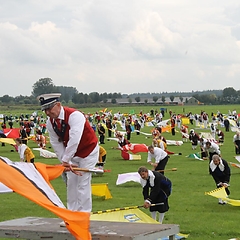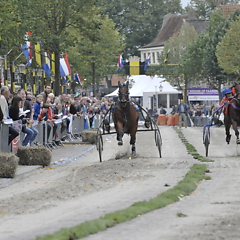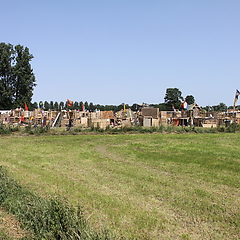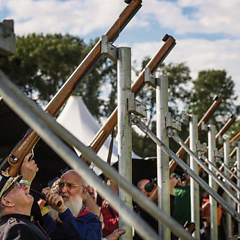Slow-swing-skating on natural ice evokes a feeling of nostalgia, people elegantly swaying across the ice. It looks easy, but appearances can be deceiving. This traditionally Dutch way of skating requires a difficult technique and special skates are needed. A slow-swing-skater skates straight on, in a kind of S-curves. The leg that the skater uses to take off, must be kept parallel to, but a little in front of the other leg, in a smooth and elegant movement, until the skate touches the ice. When the skate stands on the ice, the skater makes a forward-outward arch, on the outside of the blade. Halfway the stroke the skater turns to the other side of the skate and makes a forward-outward arch in the opposite way. This is called kantwisseling (side change). Many slow-swing-skaters skate for pleasure, preferably on natural ice but also on artificial ice-rinks. There are competitions too. It may be done individually, or in couples or so-called ‘blocks’. Often people slow-swing-skate in traditional costumes.



